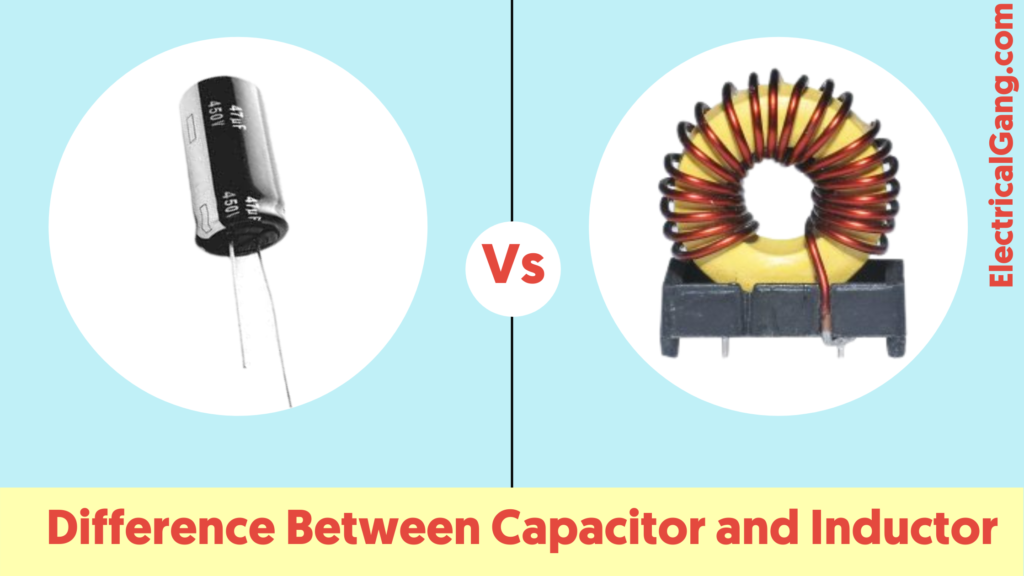
The capacitor and the inductor are the two electrical components to resist the current and the change in the current in the electronic circuit. Both of these components are passive components that store, circuit, and then draw power from the discharge. Both components are widely used in alternating current (AC) and signal filtering applications.
The main difference between a capacitor and an inductor is that the inductor is used to store energy in the form of a magnetic field. While capacitors store energy in the form of an electric field. In today’s article, we will look at the differences between capacitors and inductors and talk about their types and uses.
What are a Capacitor and Inductor?
A capacitor is an electrical component that is composed of two conductors scattered through the insulator. While the potential difference is supplied to both terminals. Then an electric field is formed, and the electric charge is stored. Depending on the characteristic of the capacitor, it is widely used in electronic circuits.
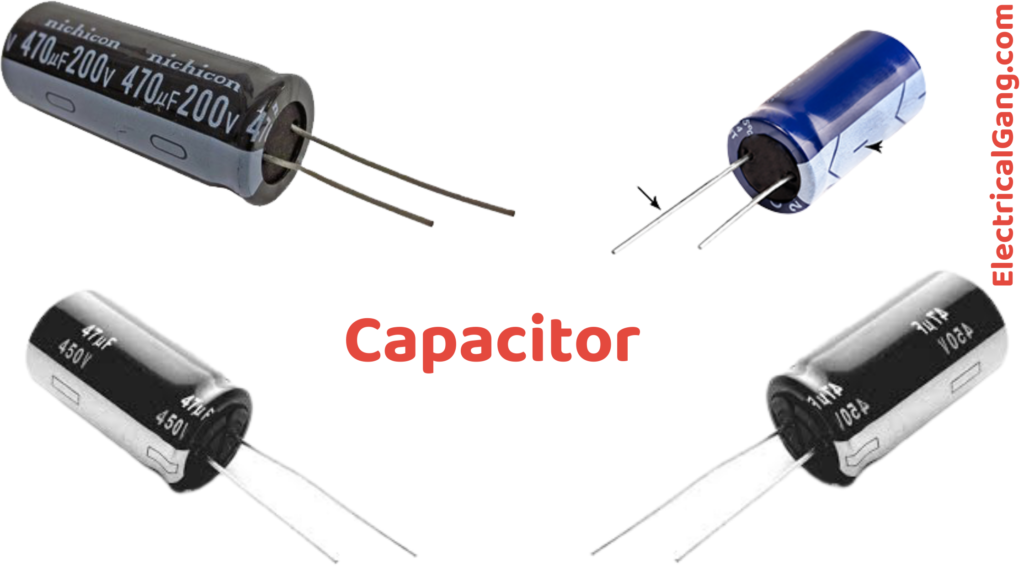
Any non-conductive object can be used as an electric object. Also selected die electric materials are something like Teflon, Mylar, Porcelain, Mica, and Cellulose. Capacitors are determined based on the selected material, such as electrodes or dielectrics. Die Electric materials are mainly used to store electrical energy.
The value of the capacitor can be determined by the size of the terminal, the distance between the terminals, and the type of material used in it.
Inductors or coils are two-terminal devices used to make different circuits. The main function of an inductor is to store energy in a magnetic field. The inductor consists of a wire which is twisted like a coil. When the current passes through the coil, it is temporarily stored in the coil.
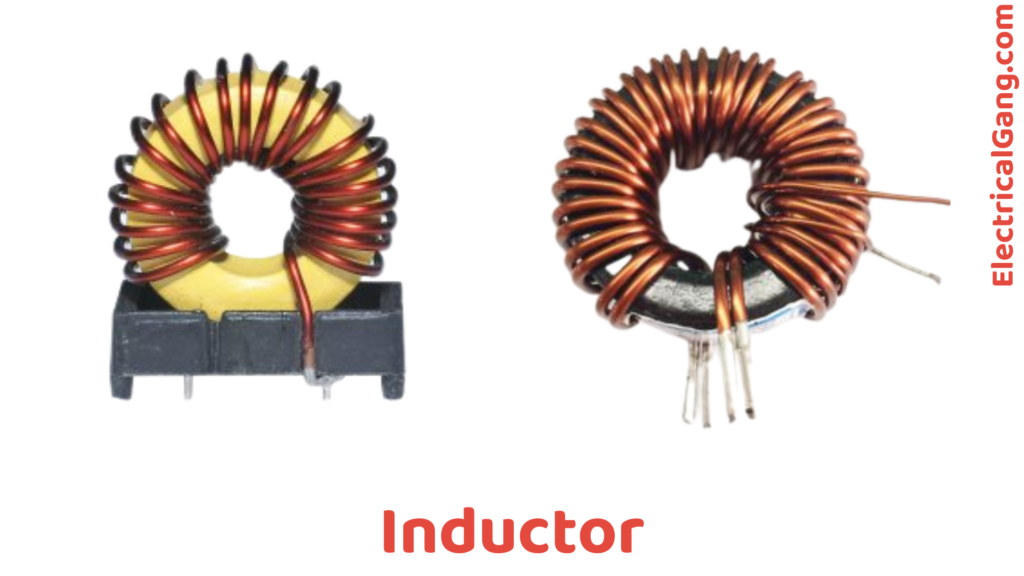
An absolute inductor is equal to a short circuit for a direct current and gives a resistive force to a current flowing based on the frequency of the current. The resistance of the inductor to the current depends on the frequency of the current flowing through it. Sometimes this device is also referred to as someone as most of the physical construction is designed with cold parts of the wire.
Difference Between Capacitor and Inductor:
The main difference between a capacitor and an inductor is as follows:
| Basis | Capacitor | Inductor |
| Definition | A capacitor stores energy in the form of an electric field. | The inductor stores energy in the form of a magnetic field. |
| Calculation of Energy | The stored energy is calculated in terms of voltages i.e. ½ CV2 | The stored energy is calculated in terms of current i.e. ½ LI2 |
| Flow of current | No current flows through the capacitor plates. | The current in an inductor passes through the coil. |
| Behavior in DC circuit | The capacitor acts as an insulator for the DC circuit. | The inductor acts as a conductor for the DC circuit. |
| Relationship between voltage and current | The current in the AC circuit leads to a voltage from 90 degrees. | The current in the AC circuit decreases the voltage by 90 degrees. |
| Unit | Its unit is Farad | Its unit is Henry |
| Short circuit | The capacitor acts as a short circuit to change the current flow. | It is equivalent to a short circuit of direct current. |
| Steady-state condition | The capacitor acts as an open circuit for the steady-state condition in DC circuits. | The indicator acts as a short circuit for the steady-state condition in DC. |
| Resist to change | The capacitor resists the change in voltage. | The inductor resists a change in current. |
| Applications | Electrolytic capacitors in high voltage power supplies and where high capacitance values are required. | Inductors are used in radios, TVs, chokes, automobile spark plugs, transformers, etc. |
Capacitor Uses:
- High voltage electrolytic capacitors are used to supply electricity.
- Axial electrolytic capacitors are used for general purposes in small sizes at low voltages where large capacitance principles are required.
- The high voltage disc ceramic capacitor has a small size and capacitance value and excellent tolerance characteristics.
- The mounting capacitors of the surface have high capacitances in proportion to the size obtained by several layers. In fact, numerous capacitors are in parallel.
Inductor Uses:
- Energy Store: This is used to create a spark. Which catches petrol in automobile engines.
- Transformer: Distributor magnetic lane inductors can be combined to make a transformer.
- Inductors are widely used in AC applications such as TV and radio.
- Chokes: The main property of the inductor is used in the power supply circuit. Where AC mains supply wants to convert to DC supply.
Unit of Measure:
The inductance is the value of the inductor and is measured in Henries. In fact, it is the SI unit of inductance and is equal to the volt-second ampere.
Units of capacitance are measured in fards denoted by F. It is equal to and equal to [ampere-second volts]. Since ampere is [coulomb sec], we can also say that F = CV.
Types of Capacitors and Inductors:
Capacitors are classified into three main types, which are as follows:
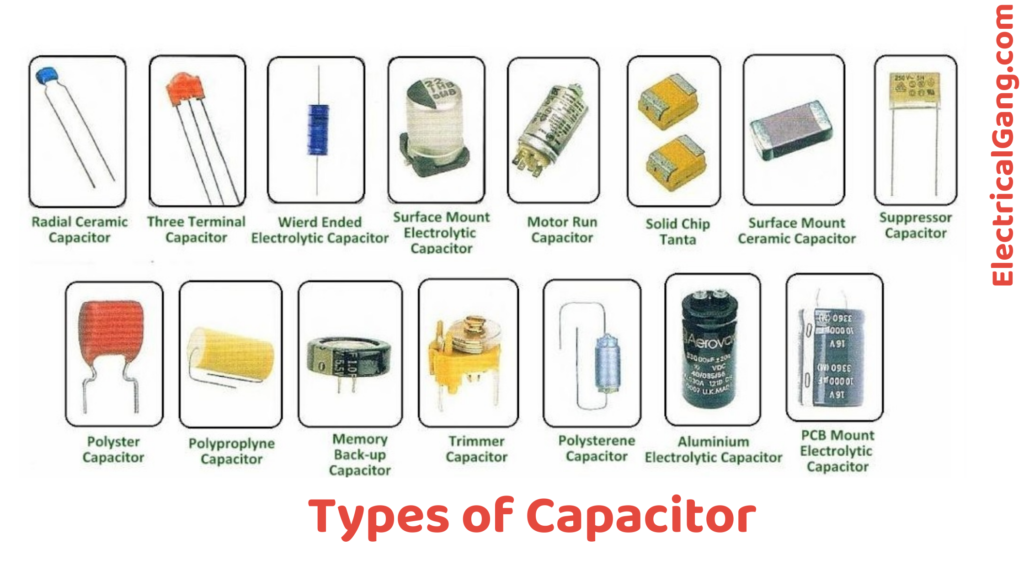
- Ceramic Capacitor.
- Tantalum Capacitor.
- Electrolytic Capacitor.
The inductors are classified into four main types, which are as follows:
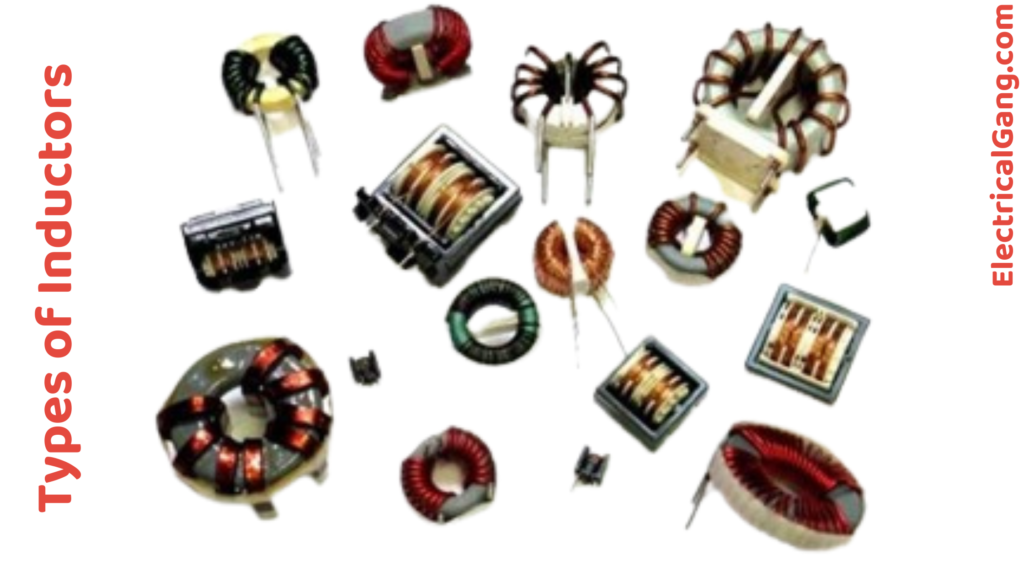
- Multilayer Inductors.
- Coupled inductors.
- Molded Inductors.
- Ceramic Core Inductor.
Relationship between V & I in Linear Circuit:
- In a capacitor, Voltage insulates behind the Current by π2.
- In an inductor, the voltage is insulated behind the voltage by π2.
Short Circuit:
- The capacitor acts as a short circuit for alternating current.
- The inductor is similar to a short circuit to DC.
Characteristics of Capacitor and Inductor:
- Integrate like resistors in a capacitor series connected in parallel.
- Inductors in parallel merge like resistors in parallel.
- The series becomes one like a resistor in a series.
Frequently Asked Questions (FAQs):

Why Do We Use an Inductor Instead of a Capacitor?
A capacitor resists the change in voltage and does not allow current to pass through it. An inductor resists current and changes in conductance. A capacitor works best at high frequencies, and an inductor works well at low frequencies. They can be combined to filter out unwanted signals or frequencies.
What Is the Difference Between Capacitance and Inductance?
The key difference between inductance and capacitance is that inductance is the property of a current-carrying conductor that generates a magnetic field around the conductor, whereas capacitance is the property of a device to hold and store electric charge.
What Is the Difference Between a Capacitor Inductor and a Resistor?
A resistor mainly works to oppose the flow of current. Whereas an inductor mainly works to oppose the change in the current flowing through it. Capacitors primarily store electrical energy for short periods of time.
Like this post? Could you share it with your friends?
Suggested Read –
- Alexa Device Is Unresponsive | How To Fix In Seconds
- Roku Sound Out of Sync | How To Fix In Seconds
- Do You Need Wifi to Airplay? | Mirror Screen Without WiFi?
- How To Connect Apple TV To Wi-Fi Without Remote? | Problem FIXED!
- What Is an Electrical Resistor? | Types of Resistors | Resistors Color Code Calculation